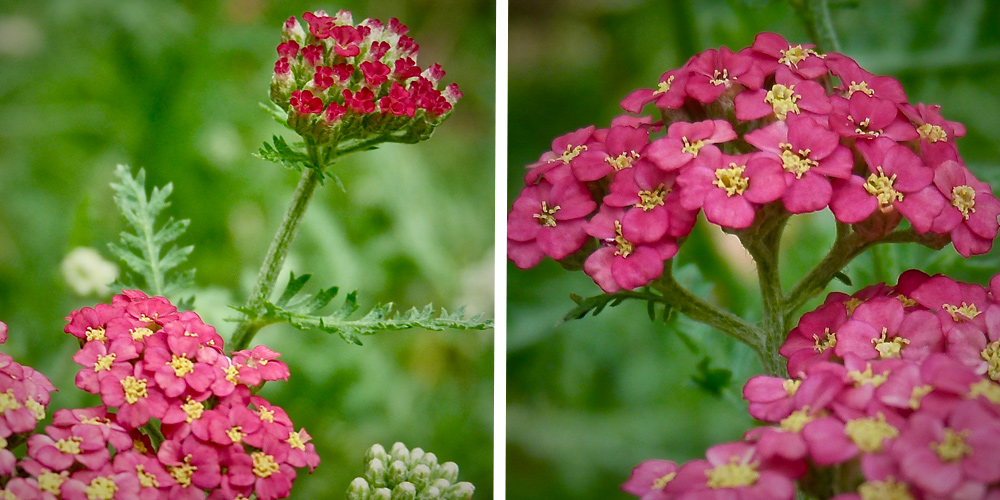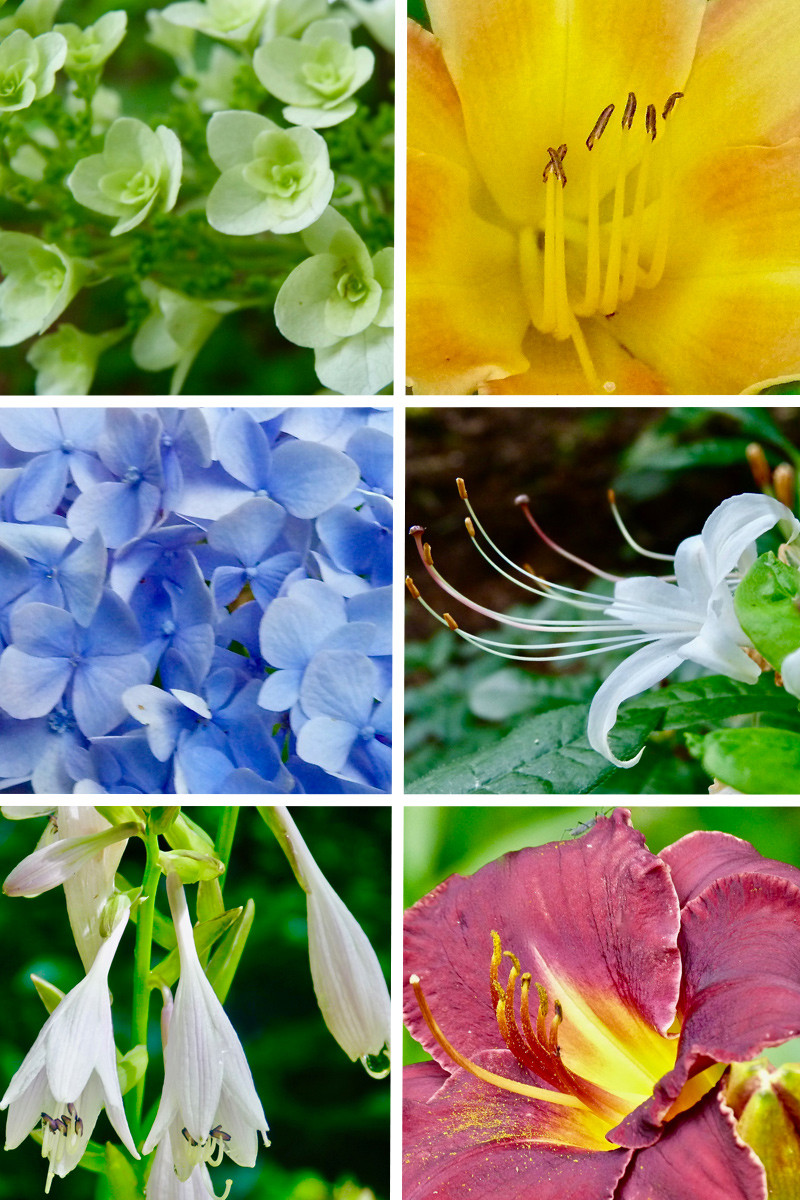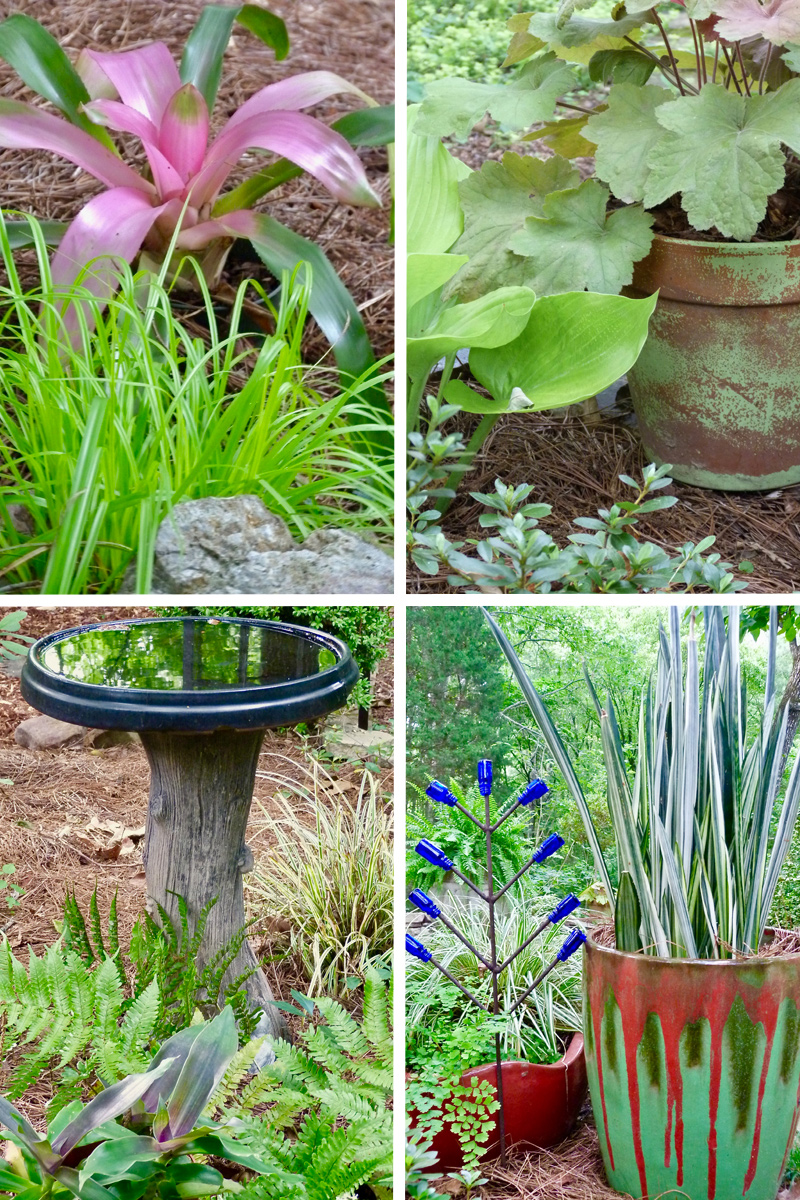In the June Garden: Tragedy, Blooms, and a Little "High Fashion"
 Sunday, June 24, 2018 at 7:00PM
Sunday, June 24, 2018 at 7:00PM Tragedy struck my garden a few days ago, and I am still shaken by it. I was inside when I heard horrific shrieks coming from outside. I stepped onto the patio and searched for the source of the commotion. A hawk was sitting on a nest high up in an oak tree.  This is a Red-shouldered hawk that lives on our property; photo taken last year.Two blue jays were desperately assaulting the hawk. The hawk was ignoring the attack as it calmly ate the blue jays' babies, whose pitiful cries could still be heard. Again and again the parents swooped down and physically tried to knock the hawk away, to no avail. A large black crow soon flew over to investigate; and although it did not attack the hawk, it added its harsh cries to the cacophony of noise. It seemed to take forever, but at last the hawk flew away, pursued by the blue jays and the crow. The blue jays soon returned to the nest, but only deathly silence greeted them.
This is a Red-shouldered hawk that lives on our property; photo taken last year.Two blue jays were desperately assaulting the hawk. The hawk was ignoring the attack as it calmly ate the blue jays' babies, whose pitiful cries could still be heard. Again and again the parents swooped down and physically tried to knock the hawk away, to no avail. A large black crow soon flew over to investigate; and although it did not attack the hawk, it added its harsh cries to the cacophony of noise. It seemed to take forever, but at last the hawk flew away, pursued by the blue jays and the crow. The blue jays soon returned to the nest, but only deathly silence greeted them.
I know it happens, but this is the first time I have witnessed one of my resident hawks eat another bird. I have often seen them attack voles and ground squirrels, with my blessing. I preferred not to think about other parts of their menu. I have to remind myself that I like to eat chicken, and I don't think too much about what happens to the chicken before it arrives at my home, neatly packaged and ready for preparation.
Well, enough of that! Here are some photos of my June garden. It is hot here, but we have had abundant rain, so the garden is lush.  clockwise from top left: A tiny sedum pup; A bee enjoys nectar from a Pentas bloom; Japanese maple helicopter seeds, called samaras; Spent Clematis bloom; 'Tropicana' Canna lily bloom; 'Tropicana' canna leaves.
clockwise from top left: A tiny sedum pup; A bee enjoys nectar from a Pentas bloom; Japanese maple helicopter seeds, called samaras; Spent Clematis bloom; 'Tropicana' Canna lily bloom; 'Tropicana' canna leaves.
Yarrow:
An elegant lady in the woodland garden:
And how is this for high fashion in the garden: Sometimes I complain about my husband's garden duds, but my own don't look much better! How about you? What do you wear in the garden?
Sometimes I complain about my husband's garden duds, but my own don't look much better! How about you? What do you wear in the garden?
 Clockwise from top left: 'Snowflake' hydrangea; Day lily; Summer blooming native azalea; Another day-lily - sorry I don't know the names; Hosta bloom; 'Endless Sumer' hydrangea.
Clockwise from top left: 'Snowflake' hydrangea; Day lily; Summer blooming native azalea; Another day-lily - sorry I don't know the names; Hosta bloom; 'Endless Sumer' hydrangea.
A friend recently gave me an enormous hosta in bloom. The catch was we had to dig it up, in June, in 90 degree weather! She had erroneously planted it in full sun, and it was burning badly. Transplanting this time of year is a definite no-no, but the plant was suffering and was likely to perish.
We tackled the chore with shovels and garden fork. Once we had the plant loosened we were faced with the challenge of moving it; the root ball must have weighed at least 150 pounds! We could hardly budge it, until we decided to use a forceful stream of water from the garden hose to knock most of the soil off the root ball. At last we were able to maneuver it (barely!) into the large waterproof garden bag I brought for the purpose.
When I got home, I filled the bag with water and let it soak a few hours until I had a chance to prepare a hole for it. Later that day I finally had the hosta settled into its new home. I cut off all the sunburned leaves, as well as other leaves damaged during the transplanting process. I was delighted to find many emerging blooms nestled amidst the foliage. Despite my removing many leaves, the plant still is at least three feet across, and it is blooming abundantly in response to its new shady environment in the woodland garden:



Here is a view of Deodar cedar 'Feelin' Blue' and a large gardenia blooming at the edge of the woodland garden:
 Peacock fern, which is actually a moss, is seen in the right foreground here.Can you believe it is almost July? Already! Happy gardening to you all! Deb
Peacock fern, which is actually a moss, is seen in the right foreground here.Can you believe it is almost July? Already! Happy gardening to you all! Deb


